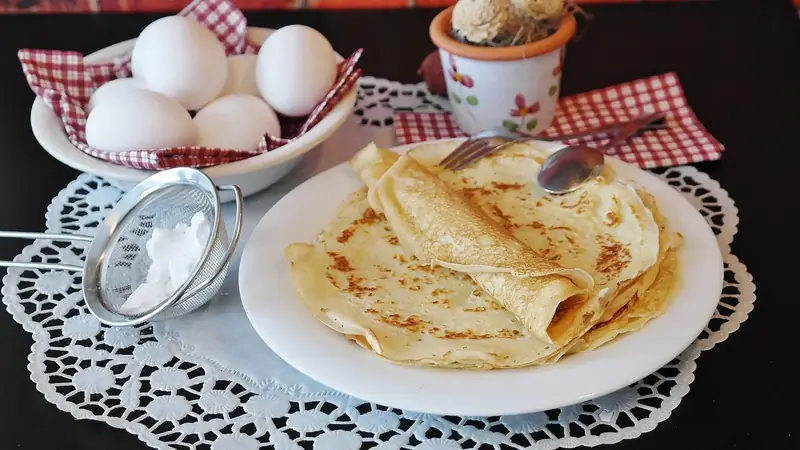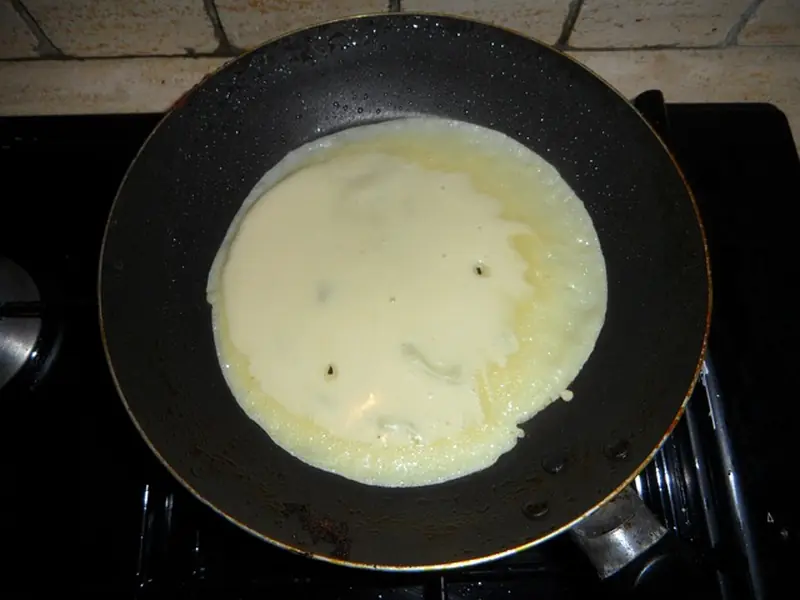
As many home cooks know, finding the right combination of ingredients for pancakes isn’t always straightforward. Meanwhile, scientists have discovered the recipe for the perfect pancake. The batter requires just three basic ingredients: flour, milk, and eggs. Of course, there may be a temptation to add oil to the mix, but that’s a mistake, insists Professor Jan Imes from University College London (UCL).
How to Make the Perfect Pancake Batter
The ratio of ingredients and the method of mixing determine whether your pancakes will turn out well.
Professor Imes has dedicated considerable time to researching pancake batter. According to him, the key factor for a successful outcome is the ratio between the amount of liquid in the mixture and the thickness of the pancake. To calculate this ratio, you need to divide the amount of milk in milliliters by the weight of the flour in grams and multiply the result by 100. A lower ratio ensures a thicker batter, while a higher one yields a thinner batter.
To learn everything about the ideal pancake, Professor Imes studied the proportions between the liquid in the batter and the thickness of pancakes worldwide.
According to his calculations, for a properly thin pancake, you will need:
- 100 g of flour
- 200 milliliters of milk
- One or two eggs
- A pinch of salt
A thicker pancake requires the same ingredients, but you should double the amount of flour to 200 g.
How to Mix the Batter
When trying to achieve the right texture for the batter, keep in mind: too much gluten will make the pancake tough, while too little will cause it to fall apart.
If you overmix the batter in an attempt to eliminate all lumps, you might end up with a tough, rubbery pancake.
“I always recommend whisking the batter with a fork to incorporate as much air as possible,” said Professor Imes. This helps break up any lumps in the batter and creates gluten that can trap the air. As a result, the pancakes turn out light and fluffy.
If you want even thinner pancakes, let the batter rest for 10-15 minutes after whisking. This allows the “protein chains to unravel, and the flour to fully hydrate,” the expert noted. This way, the pancake will be both thin and soft.

Important Details
Of course, making the batter is only half the battle. “Science shows a connection between the milk content in your pancake and its thickness,” Professor Imes pointed out. The more milk you use, the thinner the pancake will be.
For thin pancakes, he recommends a diameter of about 6-8 inches: this allows them to cook more evenly. The best diameter for thicker pancakes is around 4 inches.
To achieve a perfectly thin and crispy pancake, the expert suggests replacing butter with vegetable oil. The reason is that vegetable oil has a lower smoke point, heats up faster without burning, and spreads more easily across the pan. This ensures better heat transfer to the batter, according to the Daily Mail.
Another common issue that cooks face is uneven spreading of the batter in the pan. Once the batter hits the skillet, it quickly sets rather than forming a neat circle.
But science can help here too. Professor Matthieu Sellier, head of the Department of Mechanical Engineering at Canterbury University (UK), has developed an optimal method for tilting the pan to ensure even distribution of the batter.
He advises tilting the pan sharply in one direction when pouring in the batter, allowing it to flow quickly to the edge. Once all the batter reaches one side, tilt the pan and rotate it in circular motions, letting the batter spread evenly across the entire surface. Gradually reduce the tilt while continuing the circular motions until the mixture is evenly distributed.
Then, you need to cook the batter well on one side and master the technique of flipping the pancake. Unfortunately, science won’t help here: you’ll have to practice the flipping technique on your own.

